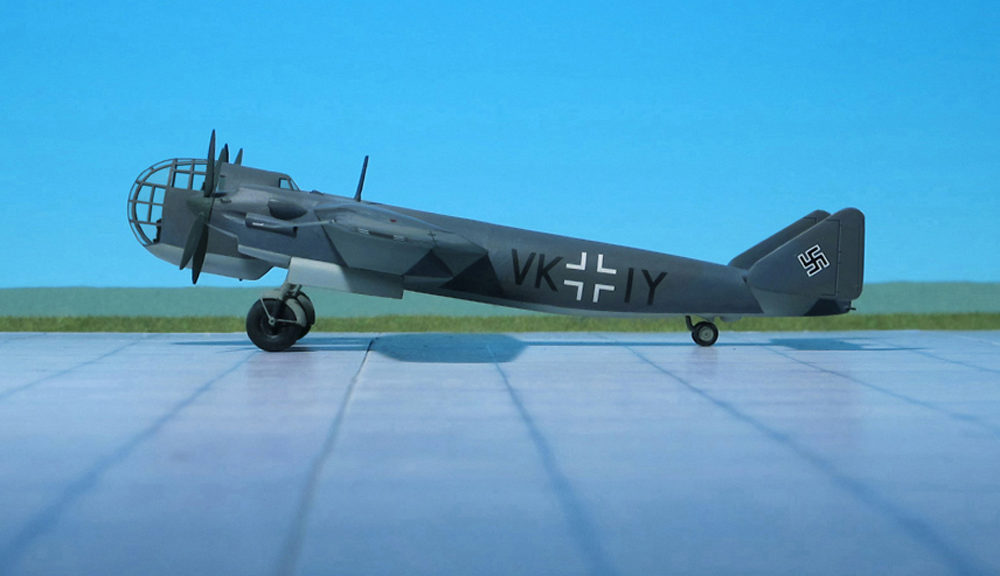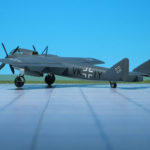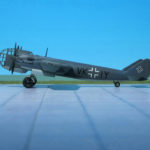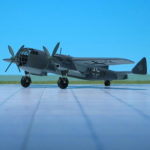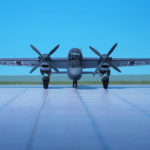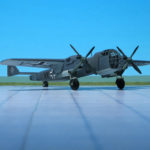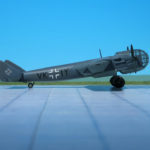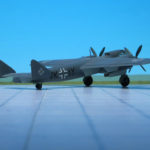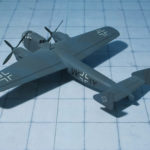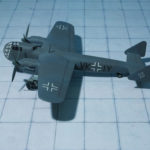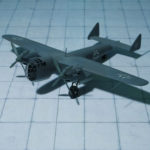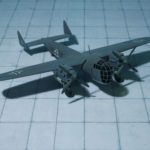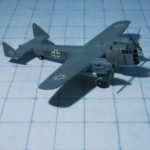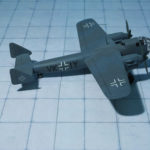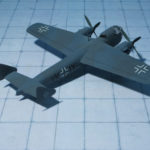TYPE: Medium bomber
ACCOMMODATION: Crew of four
POWER PLANT: Two Daimler-Benz DB 603A liquid-cooled piston engines, rated at 1,750 hp each
PERFORMANCE: 348 mph at 19,685 ft
COMMENT: When the “Führungsstab der Luftwaffe” (Operations Staff of the Luftwaffe) drafted its so-called “Bomber B” requirement which was translated into a specification for issue to selected airframe manufactures in July 1939 by the “Technischen Amt des Reichluftfahrtministeriums” (RLM), (Technical Office of the RLM), its intention was nor merely the provision of successors for the Junkers Ju 88 and Heinkel He 111; its aim was also to carry the state of the art in medium bomber design a significant step forward.
The specification was noteworthy in the performance advances that it stipulated, and equally so in design innovations that it called for. The “Bomber B” had to possess a range of 2,237 miles do endow it with a radius of action sufficient to encompass the entire British Isles from bases that it was assumed would be available in France and Norway, a maximum speed of 373 mph at 19,685-22,965 ft., which compared favourably with the speeds of the best contemporary fighters, and a bomb load of 4,410 lb. It had to carry three or four crew members, possess a loaded weight of the order of 44,090 lb., and be of twin-engined configuration, utilizing the extremely advanced 24-cylinder liquid-cooled Daimler-Benz DB 604 or Junkers Jumo 222 engines then at an early stage in development, but the really radical demands of the specification were its insistence on pressurized accommodation for the crew, and the use of remotely-controlled barbettes to house defensive armament.
Initially, the specification was issued to four manufacturers: Arado, Dornier, Focke-Wulf and Junkers, although the scope of the contest was later to be broadened to include Henschel (Henschel Hs 130) when it was realized by the RLM that this company has more pressure cabin experience than any other contestants, with the possible exception of Junkers. The final proposals of the original four competing companies were submitted to the “Technisches Amt” in July 1940, and evaluation eliminated the Arado contender, the Ar 340, prototypes being ordered of each of the other contender, Dornier Do 317, Focke-Wulf Fw 191 and Junkers Ju 288.
Dornier’s proposal was based broadly on the design of the Dornier Do 217, the four crew members being housed ahead of the wing in a pressure cabin which, taking the form of a detachable compartment pressurized by tapping the superchargers of the Daimler-Benz DB 604 engines, was extensively glazed by a series of curved panels.
Two versions of the Do 317 were proposed: the simplified Do 317A, powered by two DB 603A engines (instead of the troublesome Daimler-Benz DB 604) and featuring conventional defensive armament, and the more advanced Do 317B with the heavy 1.5 tonnes apiece, counter-rotating DB 610A/B “power system” engines, remotely aimed “Fernbedienbare Drehlafette” (FDL)-style gun turrets (remotely-controlled turrets), heavier bombload, and an extended wing.
Six prototypes of the Dornier Do 317A were ordered, and the first of these, the Do 317 V1, commenced its flight test program on September 1943. The Do 317 V1 was very similar in appearance to the later Dornier Do 217K and -M subtypes, with a visually reframed slight variation of its multiple glazed-panel “stepless cockpit”, fully glazed nose design that accommodated a pressurized cabin provision, and triangular tailfins. Trials with the Do 317 V1 revealed no real performance advance over the Do 217. However, it was clear even at this point that the call for designs was to some extent a formality, as the Junkers Ju 288 design had already been selected for production. So it was decided to complete the remaining five prototypes without cabin pressurization equipment and fit them out with FuG 230 “Kehl-Straßburg” radio guidance transmitting gear to employ them as Henschel Hs 293 missile launchers. In this form, the prototypes were redesignated Dornier Do 217R. At this time, the Do 317B project was abandoned due to changing wartime conditions (Ref.: 7, 24).
